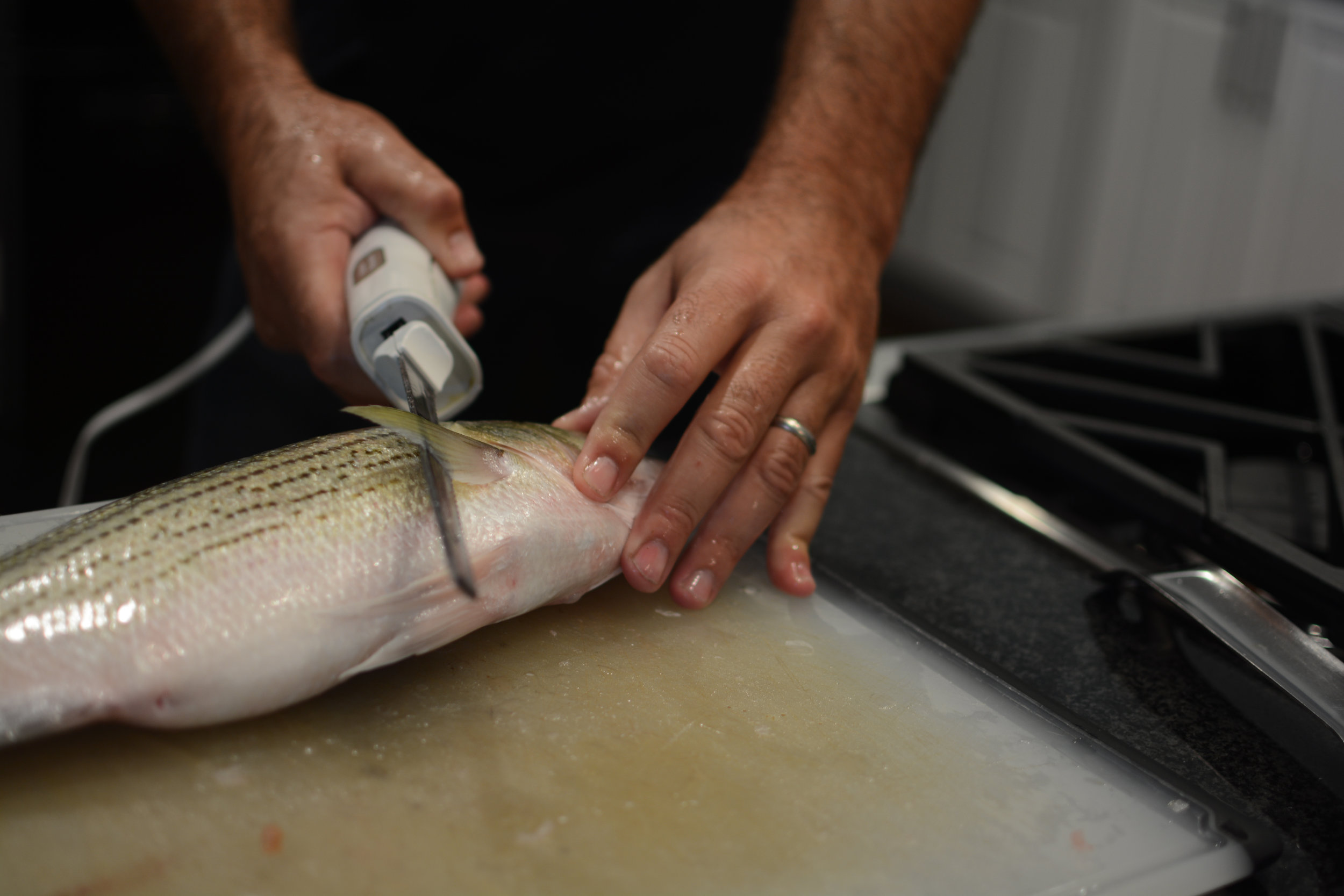HOW TO FILLET A FISH WITH AN ELECTRIC KNIFE
If you haven’t used this technique before, it can be intimidating. Intuition would tell you that using a faster tool with moving parts would be harder, but in this case, intuition would be wrong. For many fish, it is easier to use an electric knife and the yield is higher than it would be using a regular knife. The electric knife is also much quicker. The first step is to determine which types of fish are good candidates for this technique. Here are a few indicators that an electric knife is a good choice:
The fish is standard shaped. It swims upright with eyes on opposite sides of its head. Its head is small enough that it can lay flat on a cutting board.
The fish has big, hard scales. Fish that are hard to break into, like a sheepshead or a Tai snapper are good candidates for the electric knife technique. These fish will really beat up a standard fillet knife and require sawing and heavy pressure.
The fish has thick bones and a round ribcage. With these fish, the highest meat yield can be obtained by cutting straight through the bones along the spine and then removing the bones from the fillet at the end. Fish like red drum, big rockfish, and striped bass are good examples of this.
There are some fish characteristics that make them a bad choice for this technique. For these fish, use a sharp flexible fillet knife instead.
The fish is soft and oily. Salmon and mackerel are good examples of this. The electric knife will beat these fish up and the meat sticks to the blades.
The fish has many small pin bones. Trout, pike, and milkfish are examples of this. These fish are better served by a more precise tool that removes more of the bones.
The fish has a big head. Cabezons, monkfish, bullhead catfish, and some rockfish have heads that are so big they cannot lay flat on a cutting board. If the head creates a bend in the fish, it can be hard to fillet with an electric knife which has rigid, straight blades.
The fish is cartilaginous. Sharks and sturgeons are a bad choice for the electric because the blades will cut into the spine, rather than skating across the surface, resulting in a poor end product.
The fish is taller than the length of your electric knife. The blades of the knife should be at least 2 inches longer than the height of the fish. Larger fish are more difficult regardless of the technique, but huge fish will require more intricate cutting and an electric knife is not flexible enough.
Once you are confident that you have a fish that will work, here is a step by step guide to how it is done.
Wash the outside of the fish thoroughly.
Make a cut down to the spine the goes from top to bottom, starting at the base of the head and ending just behind the pelvic fins. Angle the blade so that it cuts slight toward the front of the fish to maximize meat yield.
When the blade stops at the spine, make a 90 degree turn toward the tail with the blades engaged as you turn the knife.
Cut toward the tail with the knife edge angled slightly down so that the knife skates across the spine. Be careful to keep the knife parallel to the cutting board. If you hold the handle higher or lower than the point, you will lose meat. You may have to position the cutting board on the edge of the counter, so that you can get the knife handle love enough.
Cut through the skin at the end.
Flip the fish over and repeat.
Remove the skin by holding the end down with your finger while cutting down to the skin. Turn the knife and hold it flat to the cutting board. Cut all the way to the other end of the fish.
Follow the contour of the ribs to remove from the fillet. This part can be done with a regular knife if you are more comfortable.
Repeat on the other side.
Feel the fish thoroughly to see if there are any bones. Sometimes there are bits of fin at the top or bottom that need to get removed. Sometimes small chips of the spine will be stuck to the center of the fillet. Just clean those up with a sharp knife.
Rinse with cold water, pat dry, and store until needed.















